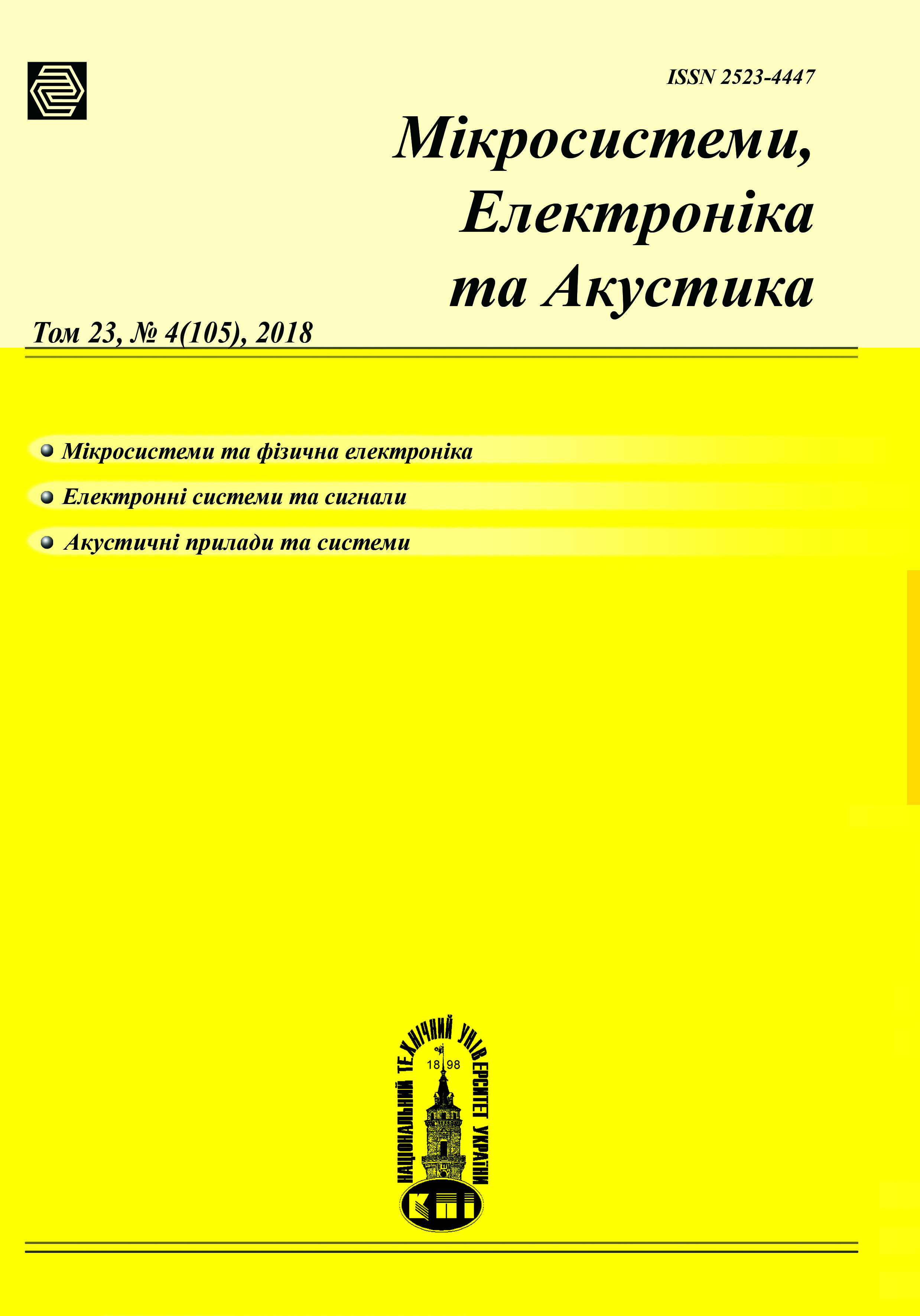Особливості режиму роботи узгоджувального імпульсного регулятора, що працює на акумулятор
Основний зміст сторінки статті
Анотація
Проаналізовано особливості роботи імпульсного регулятора (IP) напруги на акумулятор, що працює в буферному режимі, з урахуванням внутрішніх опорів джерела напруги та акумулятора. Показано, що за таких умов IP працюватиме в режимі регулювання струму, а не напруги. На прикладі IP напруги підвищувального типу визначено регулювальні характеристики для режимів безперервного та переривчастого струму індуктивності. Показано, що для зменшення залежності вихідної напруги від струму заряджання акумулятора, а також зменшення втрат потужності у ньому, необхідно забезпечити певне співвідношення між внутрішніми опорами джерела електричної енергії та акумулятора. Побудовано графіки регулювальних характеристик і визначено умови передавання від джерела енергії до акумулятора максимально можливої потужності. Дано рекомендації щодо застосування режимів безперервного та переривчастого струму індуктивності.
Бібл. 13, рис. 5, табл. 2.
Блок інформації про статтю

Ця робота ліцензується відповідно до Creative Commons Attribution 4.0 International License.
Автори, які публікуються у цьому журналі, погоджуються з наступними умовами:- Автори залишають за собою право на авторство своєї роботи та передають журналу право першої публікації цієї роботи на умовах ліцензії Creative Commons Attribution License, котра дозволяє іншим особам вільно розповсюджувати опубліковану роботу з обов'язковим посиланням на авторів оригінальної роботи та першу публікацію роботи у цьому журналі.
- Автори мають право укладати самостійні додаткові угоди щодо неексклюзивного розповсюдження роботи у тому вигляді, в якому вона була опублікована цим журналом (наприклад, розміщувати роботу в електронному сховищі установи або публікувати у складі монографії), за умови збереження посилання на першу публікацію роботи у цьому журналі.
- Політика журналу дозволяє і заохочує розміщення авторами в мережі Інтернет (наприклад, у сховищах установ або на особистих веб-сайтах) рукопису роботи, як до подання цього рукопису до редакції, так і під час його редакційного опрацювання, оскільки це сприяє виникненню продуктивної наукової дискусії та позитивно позначається на оперативності та динаміці цитування опублікованої роботи (див. The Effect of Open Access).
Посилання
V. S. Moin, Stabilizirovannyye tranzistornyye preobrazovateli [Stabilized transistor converters], Energoatomizdat, 1986, p. 376..
T. Ninomiya, K. Harada, M. Nakahara, «On the maximum regulation range in boost and buck-boost converters,» в IEEE Power electronics Specialists conference record, 1981. DOI: 10.1109/PESC.1981.7083635
R. Severns, G. Bloom,, «Impul’snyye preobrazovateli postoyannogo napryazheniya dlya sistem vtorichnogo elektropitaniya [Switching Converters DC to secondary power systems].,» Moskow, 1988. ISBN 5-283-02435-0
Y. P. Goncharov, O. V. Budonny, V. G. Morozov, M. V Panasenko, V. Y. Romashko, V. S. Rudenko, Peretovyuvalna technicala. Navchalnyi posibnyk. Chstyna 2 [Power conversion equipment. Tехt book. Part 2]., Kharkiv: Folіo, 2000. ISBN 966-03-0697-0.
L. A Bessonov, Teoretycheskye osnovy élektrotekhnyky. Élektrycheskye tsepy [The theory of Electrical Engineering. Electrical circuits: a textbook for bachelors], Moskow: Publishing House Yurayt, 2014, p. 701. ISBN 978-5-9916-3210-2.
V. Y., Romashko, «Do pitan'ya pro vídbír maksimal'noí̈ potuzhností v dzherel yelektrichnoí̈ yenergíí̈ [On the selection of the maximum power from the source of electrical energy],» Electronics and communication, № 2013, pp. 28-34, 2013. URL: http://ela.kpi.ua/handle/123456789/5964
V. Y., Romashko, «Ustroystva soglasovaniya nagruzki s istochnikom elektricheskoy energii [Matching device load from the source of electrical energy],» Energy saving. Energy. Energy audit, т. 1, № 8, pp. 67 - 74, 2013. URL: http://repository.kpi.kharkov.ua/bitstream/KhPI-Press/8715/1/EEE_2013_8_T_1_Romashko_Matching.pdf
Sonia Leva, Dario Zaninelli, Raffaele Contino, «Integrated Renewable Sources for Supplying Remote Power Systems,» WSEAS TRANSACTIONS on POWER SYSTEMS, т. 2, № 2, pp. 41 - 48, february 2007. ISSN 1790-5060
V. Y. Romashko, I. V. Verbitsky, «OsoblivostI poshuku tochki maksimalnoYi potuzhnostI sonyachnoYi batareYi pri vikoristannI uzgodzhuvalnogo Impulsnogo regulyatora [Features of finding a maximum power point of a solar bat-tery on basis a matching pulse converter],» Electronics and Communications, т. 21, № 6, pp. 22-26, 2016. URL: http://nbuv.gov.ua/UJRN/eisv_2016_21_6_5.
V.Y. Romashko, «Rehulyuvalʹni kharakterystyky impulʹsnykh rehulyatoriv z urakhuvannyam vnutrishnʹoho oporu dzherela elektrozhyvlennya [Regulation characteristics of switching regulators with taking into account the internal resistance of power supply],» Microsystems, electronics and acoustics, т. 22, № 6, pp. 29-34, 2017. DOI: 10.20535/2523-4455.2017.22.6.81414.
Luo-Qi Soh, Chee-Chiang Derrick Tiew, «Building of a portable solar ac & dc power supply,» в Intelligent Systems, Modelling and Simulation, 204. DOI: 10.1109/ISMS.2014.82
Srinivasa Kishore Babu Y, Tripura Pidikiti, «A DC-DC converter with battery energy storage system for electric vehicles,» Journal of Control Theory and Applications, vol. 33, no. 9, pp. 61-69, 2016. URL: http://www.serialsjournals.com/serialjournalmanager/pdf/1481105441.pdf
P. F. Filchakov, Spravochnik po elementarnoy matematike. Geometriya, trigonometriya, vektornaya algebra [Handbook of elementary mathematics. Geometry, trigonometry, vector algebra], Kiev: Naukova Dumka, 1966, p. 442.





